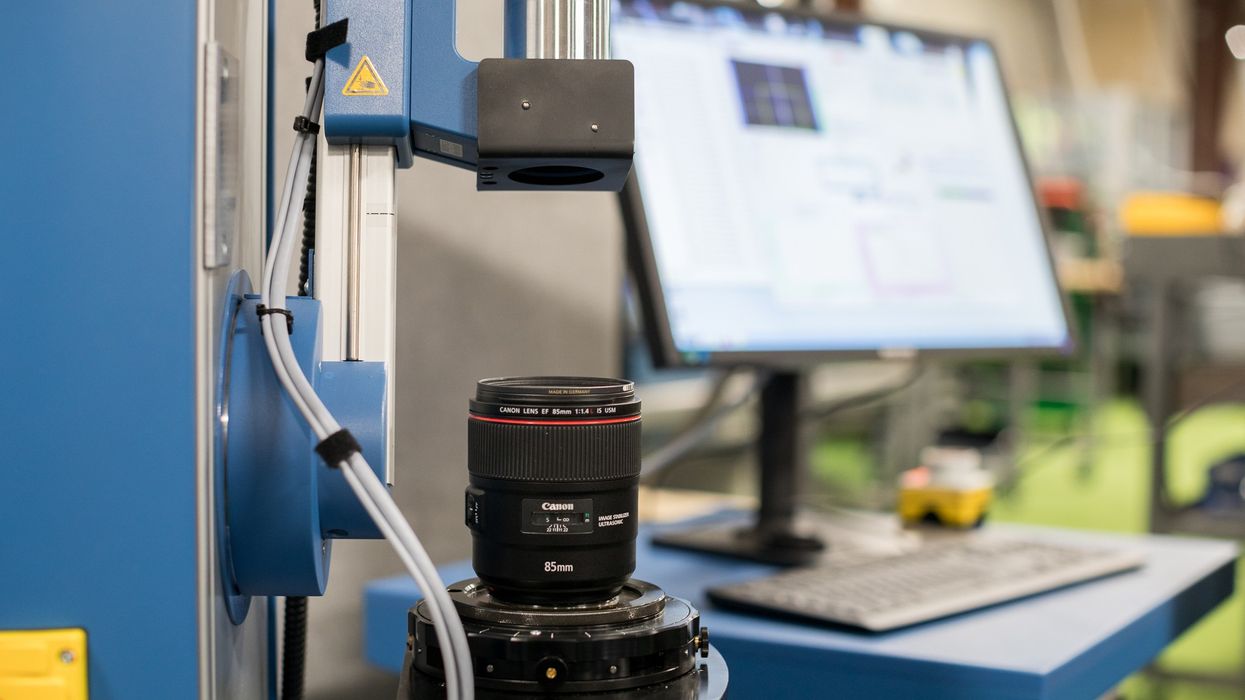Nerd Out on All Things 'Lens Testing' with This Quality Study
LensRentals is aiming to find a way to quickly measure the quality of a lens.

Have you ever wanted to dig all the way to the bottom of something? In the end, you never get there, of course, but sometimes you want to push your knowledge further than it previously had gone?
Well, LensRentals decided it wanted to really, really, really evaluate what made a lens "good" or not. The company had commercial reasons to do this (if you rent a lens from them, you want it to be sharp and hold focus), but in their pursuit of deep-nerd knowledge, they likely went beyond the needs of the marketplace.

First off, we should start with a quick review of MTF, or modulation transfer function. This is the ability of a lens to transfer contrast from a scene (tested with high contrast black and white line pairs) to a sensor at a given resolution. Edmund Optics has a great dive into precisely what is being measured, and why resolution plays such an important part. For the sake of this discussion, what matters is that MTF is frequently used in evaluating lenses to see how they are performing. It's especially useful as a measurement of an actual real-world lens. While a lens might have the idea form it aspires to, inconsistent manufacturing or poor treatment of a lens could knock quite a bit of its quality off.
Roger Cicala at LensRentals dives ever deeper. For starters, the standard measurement measures from the center to the edge of a lens along one axis. Have you ever had a lens that was sharper on one side than the other? Testing only one axis would miss that very common situation. As a result, the company decided to test four axes instead. To be thorough, it tested 8 and 12 axes as well, but every decision you make as a filmmaker is a tradeoff of time-versus-results, and no extra info was found by doubling or tripling the time of lens evaluation.
Have you ever noticed that sometimes your depth-of-field curves? An object in the center is sharp, but off to the left or right the focus is slightly in front of or behind where it should be?
LensRentals went further and decided to profile lenses for field curvature. Have you ever noticed that sometimes your depth-of-field curves? An object in the center is sharp, but off to the left or right the focus is slightly in front of or behind where it should be? Using MTF and field curvature measures lens rentals starting profiling lenses for that very phenomenon. However, those tests ended up taking a long time, too long to make it through its lens inventory.
The company settled on a system that would provide the information it needed. It now does 4 axis MTF readings that go through all the focus positions in the lens, measuring MTF for the entire focus scale. By doing this, the company can get a much faster handle when lenses have focus tilts or curves.

What's the takeaway for filmmakers? First, always remember that there is variation in manufacturing. Just because you loved one 85mm Zeiss Super Speed doesn't mean you'll love another. Second, lenses are complicated and deserve constant care. There is a reason why filmmakers develop relationships with rental houses and go back over and over again, as there are lens techs constantly measuring and maintaining lenses.
Sometimes it's fun to dive a bit into how other people do their jobs. You might not be a lens tech (or ever even want to be one), but if you work in movies in any shape or form, your work depends on properly calibrated lenses, and it's interesting to see what everyone is getting up to at the test bench.
For the full deep dive of epic nerd proportions, check out this blog post. We dare you to read it all the way to the end.











